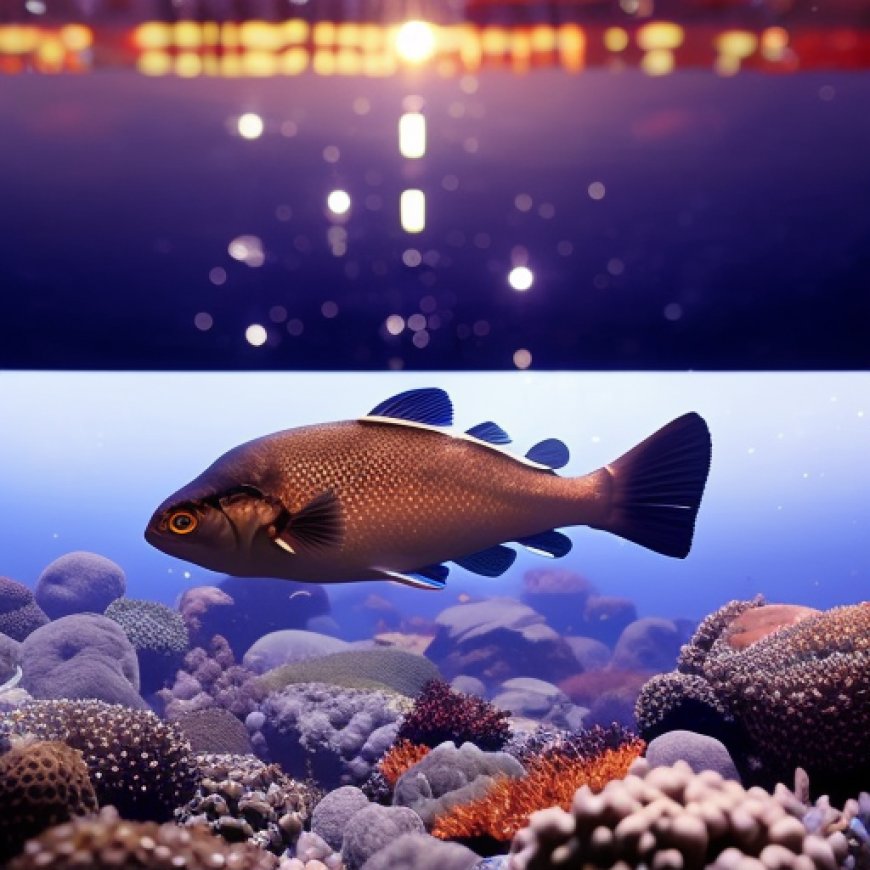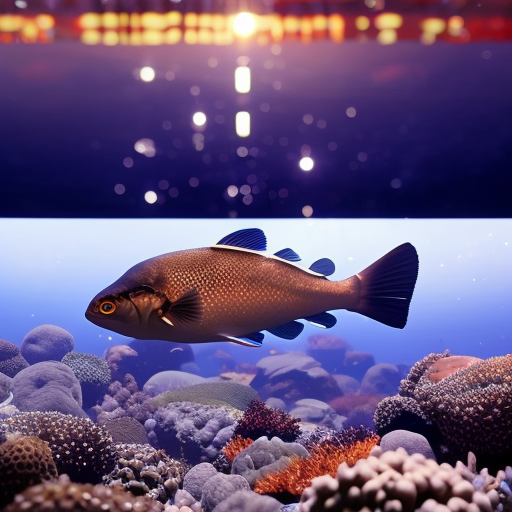Climate change is rewiring fish brains — and probably ours, too
Climate change is rewiring fish brains — and probably ours, too Grist


The Weight of Nature: How a Changing Climate Changes Our Brains
This story is excerpted from THE WEIGHT OF NATURE: How a Changing Climate Changes Our Brains, available April 9, 2024, from Dutton, an imprint of Penguin Publishing Group.
Introduction
Imagine you are a clown fish. A juvenile clown fish, specifically, in the year 2100. You live near a coral reef. You are orange and white, which doesn’t really matter. What matters is that you have these little ear stones called otoliths in your inner ear, and when sound waves pass through the water and then through your body, these otoliths move and displace tiny hair cells, which trigger electrochemical signals in your auditory nerve. Nemo, you are hearing.
The Impact of Climate Change on Clown Fish
But you are not hearing well. In this version of century’s end, humankind has managed to pump the climate brakes a smidge, but it has not reversed the trends that were apparent a hundred years earlier. In this 2100, atmospheric carbon dioxide levels have risen from 400 parts per million at the turn of the millennium to 600 parts per million — a middle‑of‑the-road forecast. For you and your otoliths, this increase in carbon dioxide is significant, because your ear stones are made of calcium carbonate, a carbon-based salt, and ocean acidification makes them grow larger. Your ear stones are big and clunky, and the clicks and chirps of resident crustaceans and all the larger reef fish have gone all screwy. Normally, you would avoid these noises, because they suggest predatory danger. Instead, you swim toward them, as a person wearing headphones might walk into an intersection, oblivious to the honking truck with the faulty brakes. Nobody will make a movie about your life, Nemo, because nobody will find you.

Research on the Impact of Ocean Acidification
It’s not a toy example. In 2011, an international team of researchers led by Hong Young Yan at the Academia Sinica, in Taiwan, simulated these kinds of future acidic conditions in seawater tanks. A previous study had found that ocean acidification could compromise young fishes’ abilities to distinguish between odors of friends and foes, leaving them attracted to smells they’d usually avoid. At the highest levels of acidification, the fish failed to respond to olfactory signals at all. Hong and his colleagues suspected the same phenomenon might apply to fish ears. Rearing dozens of clown fish in tanks of varying carbon dioxide concentrations, the researchers tested their hypothesis by placing waterproof speakers in the water, playing recordings from predator-rich reefs, and assessing whether the fish avoided the source of the sounds. In all but the present-day control conditions, the fish failed to swim away. It was like they couldn’t hear the danger.
In Hong’s study, though, it’s not exactly clear if the whole story is a story of otolith inflation. Other experiments had indeed found that high ocean acidity could spur growth in fish ear stones, but Hong and his colleagues hadn’t actually noticed any in theirs. Besides, marine biologists who later mathematically modeled the effects of oversize otoliths concluded that bigger stones would likely increase the sensitivity of fish ears — which, who knows, “could prove to be beneficial or detrimental, depending on how a fish perceives this increased sensitivity.” The ability to attune to distant sounds could be useful for navigation. On the other hand, maybe ear stones would just pick up more background noise from the sea, and the din of this marine cocktail party would drown out useful vibrations. The researchers didn’t know.
The uncertainty with the ot
SDGs, Targets, and Indicators
1. Which SDGs are addressed or connected to the issues highlighted in the article?
- SDG 13: Climate Action
- SDG 14: Life Below Water
2. What specific targets under those SDGs can be identified based on the article’s content?
- SDG 13.2: Integrate climate change measures into national policies, strategies, and planning.
- SDG 14.2: By 2020, sustainably manage and protect marine and coastal ecosystems to avoid significant adverse impacts.
3. Are there any indicators mentioned or implied in the article that can be used to measure progress towards the identified targets?
No specific indicators are mentioned in the article that can be used to measure progress towards the identified targets. However, potential indicators could include:
- Carbon dioxide levels in the atmosphere
- Acidification levels in seawater
- Growth and size of otoliths in fish
- Ability of fish to respond to olfactory and auditory signals
Table: SDGs, Targets, and Indicators
| SDGs | Targets | Indicators |
|---|---|---|
| SDG 13: Climate Action | 13.2: Integrate climate change measures into national policies, strategies, and planning. | No specific indicators mentioned in the article. |
| SDG 14: Life Below Water | 14.2: By 2020, sustainably manage and protect marine and coastal ecosystems to avoid significant adverse impacts. | No specific indicators mentioned in the article. |
Behold! This splendid article springs forth from the wellspring of knowledge, shaped by a wondrous proprietary AI technology that delved into a vast ocean of data, illuminating the path towards the Sustainable Development Goals. Remember that all rights are reserved by SDG Investors LLC, empowering us to champion progress together.
Source: grist.org

Join us, as fellow seekers of change, on a transformative journey at https://sdgtalks.ai/welcome, where you can become a member and actively contribute to shaping a brighter future.







